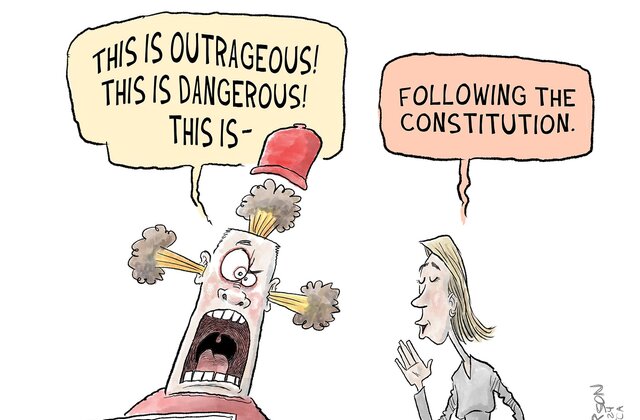[ad_1]
ASHKELON, Israel (AP) — Gad Partok was 10 years old in 1942 when Nazis attacked his street in the coastal Tunisian city of Nabeul. He saw them going from house to house, driving out his neighbors, shooting them, and burning their houses.
Like many Jews who moved to Israel after the war, Partok believed that Israel would be a place where he would finally be free from oppression.
The Israeli-Palestinian conflict has been a constant reminder for decades that security is not absolute, and security comes at a price. But October 7, 2023 – the day Hamas committed the largest massacre of Jews since the Holocaust – shattering its faith in Israel as a haven.
The 93-year-old man was watching TV news from his living room as videos of Hamas militants tearing apart communities in the southern Israeli city of Ashkelon, just a few kilometers (miles) from where he lives. As rockets were fired from Gaza, Partok watched footage of militants killing, looting and surrounding hostages.
“I thought – what, is this the era of those Nazis? It can’t be,” Partok said, clenching his fists as he spoke.
political cartoon

Hamas militants blew up Israel’s elaborate security arrangements that day, killing about 1,200 people and taking about 250 hostages into Gaza. For many people, he The stampede brought back memories About the horrors of the Nazis.
Partok was appalled by the militants’ impunity in the agricultural cooperatives and small towns of his adopted country. When he saw the attack, he wondered where the country’s security had gone.
“Where is the army? Where is the government? Our people?” he recalled. The feeling of abandonment brought back disturbing memories of his youth.
“Dragging in the people of Berri, Nir Oz, Kfar Aza, Kisufim, Holit, it’s the same thing. It reminded me of the same thing,” he said, ticking off the names of the affected communities. “I was very, very unwell. “I also felt a feeling that is difficult to explain, of hatred, of fear, of terrible memories.”
The plight of Tunisia’s small Jewish community is a lesser-known chapter of the genocide.
According to Israel’s Yad Vashem Museum, during the six-month occupation, the Nazis deported approximately 5,000 Tunisian Jews to labor camps, where dozens died from labor, disease, and Allied bombing campaigns. Allied forces liberated Tunisia in 1943, but it was too late to save many of Partok’s neighbors.
Partok said his family survived only because his father, a textile merchant who spoke Arabic, hid the family’s Jewish identity. The family left Tunisia and moved to Israel in 1947, a year before the country gained independence.
As an adult, he taught photography and owned a photo shop in Ashkelon. His house is full of yellowing photographs; Photographs of his late wife and parents adorn the walls. His grandchildren and great-grandchildren live throughout Israel.
Partok’s home is less than 24 kilometers (15 mi) from the Gaza border, and so he lives with the sounds of war all around him – Israel’s constant bombing campaign in Gaza, as well as Hamas launches into Israel. Rocket.
Despite the scope of death and destruction in Gaza, many Israelis are focused on October 7.
News channels rarely broadcast footage of humanitarian crisis in gazaInstead it oscillates between the tragedy and stories of heroism of October 7 and the plight of the more than 100 hostages still held by Hamas.
Warning sirens routinely sound in Ashkelon when rockets are fired into Israel. Partok leaves the television on and listens to news about the war. The stories continue to emerge – a hostage declared dead, a child with no parents, a survivor’s story recently told.
He said, “I’m sitting here in my chair, and looking, and my eyes are staring, and I can’t believe it.” “Is it true? Is it so?”
Copyright 2024 The associated Press, All rights reserved. This material may not be published, broadcast, rewritten, or redistributed.
[ad_2]
Source link
